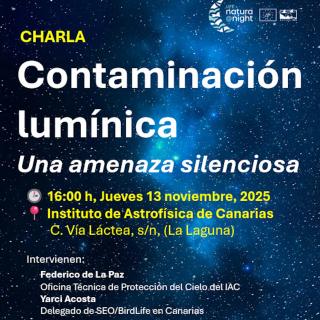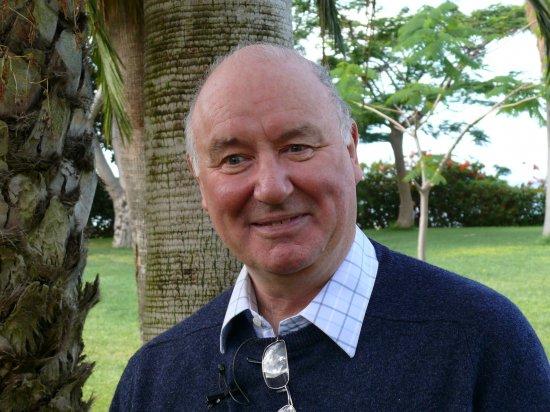It may interest you
-
Dr. Rubén Sánchez-Janssen has been announced as the new Director of the Isaac Newton Group of Telescopes (ING). Dr. Rubén Sánchez-Janssen will follow in the footsteps of Dr. Marc Balcells. Dr Sánchez-Janssen is an Astronomer and Project Scientist at STFC’s UK Astronomy Technology Centre (UKATC), where he leads the development of scientific instrumentation and facilities for ground- and space-based astronomy from the ultraviolet to the near-infrared, with a particular emphasis on future missions. He specializes in galaxy evolution, with particular focus on low-mass galaxies and star clusterAdvertised on
-
 Especialistas abordarán el impacto de la iluminación artificial excesiva y sus efectos sobre la astronomía, la salud humana y la biodiversidad El Instituto de Astrofísica de Canarias (IAC) y SEO/BirdLife Canarias celebran la conferencia " Contaminación Lumínica: Una Amenaza Silenciosa", una jornada clave para la protección del medio ambiente y el patrimonio científico del archipiélago. La ponencia estará a cargo de Federico de la Paz, técnico del IAC, y Yarci Acosta de Seo/Birdlife, quien desgranará los graves riesgos que el uso ineficiente y descontrolado de la luz artificial supone para laAdvertised on
Especialistas abordarán el impacto de la iluminación artificial excesiva y sus efectos sobre la astronomía, la salud humana y la biodiversidad El Instituto de Astrofísica de Canarias (IAC) y SEO/BirdLife Canarias celebran la conferencia " Contaminación Lumínica: Una Amenaza Silenciosa", una jornada clave para la protección del medio ambiente y el patrimonio científico del archipiélago. La ponencia estará a cargo de Federico de la Paz, técnico del IAC, y Yarci Acosta de Seo/Birdlife, quien desgranará los graves riesgos que el uso ineficiente y descontrolado de la luz artificial supone para laAdvertised on -
 Ultra-faint dwarf galaxies, among the tiniest and faintest galaxies known, may hold the key to understanding one of the Universe’s biggest mysteries: the true nature of dark matter. A new study reveals that even a single collision between dark matter particles every 10 billion years — roughly the age of the Universe — is enough to explain the dark matter cores observed in these small systems. These galaxies, which contain only a few thousand stars, are dominated by dark matter and have relatively simple evolutionary histories. That makes them ideal cosmic laboratories for testing theoriesAdvertised on
Ultra-faint dwarf galaxies, among the tiniest and faintest galaxies known, may hold the key to understanding one of the Universe’s biggest mysteries: the true nature of dark matter. A new study reveals that even a single collision between dark matter particles every 10 billion years — roughly the age of the Universe — is enough to explain the dark matter cores observed in these small systems. These galaxies, which contain only a few thousand stars, are dominated by dark matter and have relatively simple evolutionary histories. That makes them ideal cosmic laboratories for testing theoriesAdvertised on

